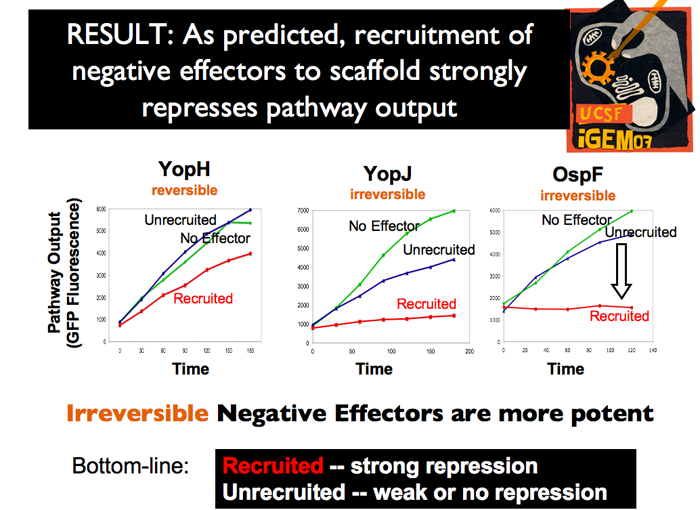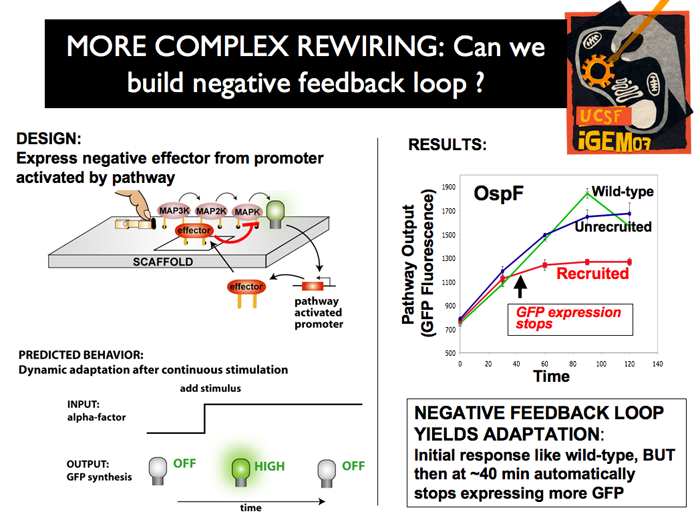 | After toiling in the lab over our constructs, we were able to experiment with all the conditions we desired. Moreover, a remarkable thing happened! Our results were clear! AND, they closely followed our predictions! Across the board, the recruited effectors drastically decreased the mating output of the pathway (as measured by GFP fluorescence by FACS). These same effector proteins, when unable to bind to the scaffold, had significantly weaker effects. Additionally, our results showed that the irreversible negative effectors (YopJ and OspF) showed stronger repressive potency.
|
 | Our final step in this project was to build in feedback loop to the circuit. All of the previous experiments were performed with constitutive expression. In order to build a negative feedback loop, we placed the expression of the negative effectors under the control of a mating-induced promoter. As such, activation of the mating pathway induced expression of an effector, until its expression proceeds to shut the off the pathway. This will create dynamic adaptive behavior after continuous stimulation with the pheromone (alpha-factor). The results confirmed this behavior—-as you can see, after 40 minutes of pathway activation, the expression of GFP comes to a halt.
|